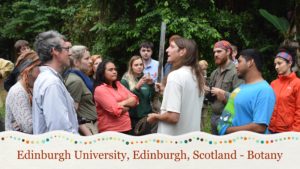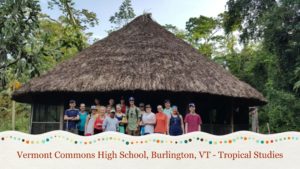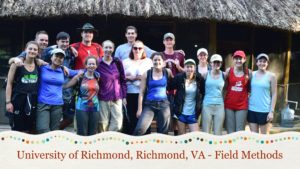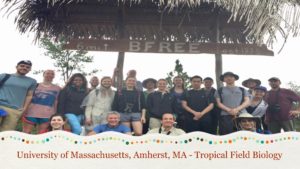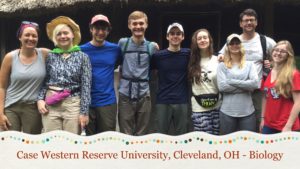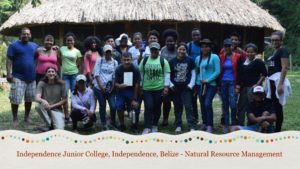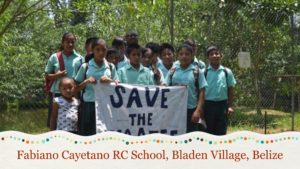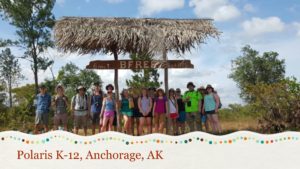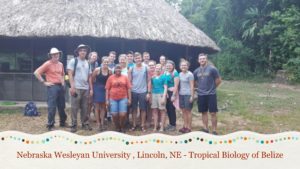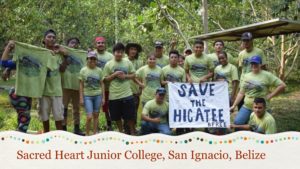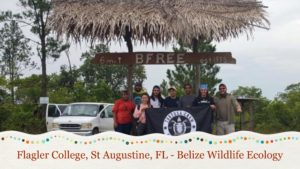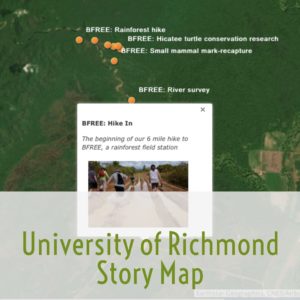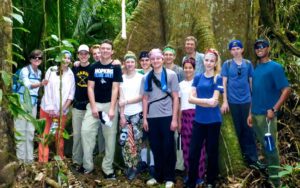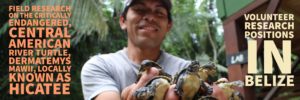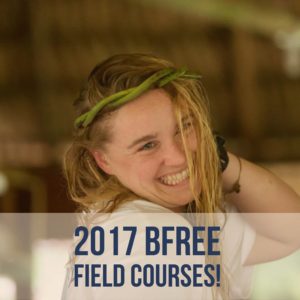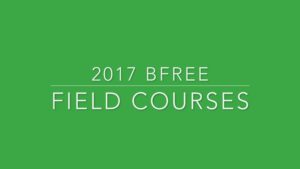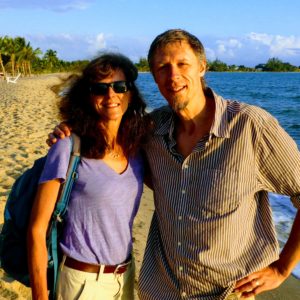BFREE Summer Internship Reflection
BFREE Summer Internship Reflection
By: Jaren Serano
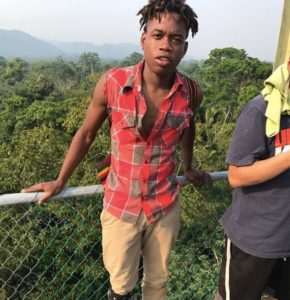
This summer I had the opportunity to be a part of something very special. I became immersed in a unique classroom with seemingly no boundaries. It all started on July 31st, 2017, this part of my internship I would like to refer to it simply as “the walk”. I was excited about embarking on this journey, but little did I know what Mother Nature had in store for me prior to even reaching BFREE’s grounds.
From the Southern Highway, I hiked in some 8 miles. Now that may not seem like much but given that I did not pack light it seemed more like 80 miles. While hiking I regretted several times packing so many stuff. Although this internship took place during the summer, it was also the wet season, so saying the road was muddy would be an understatement. I had to trek through red clay mud that was at least knee deep. After a couple hours, I eventually reached the BFREE research station looking as if I just ran the Boston Marathon. The staff was very welcoming and helpful in getting me settled in. All in all, the walk in will forever be one of those memories that you might not appreciate in the moment but when looking back you will laugh and appreciate every footprint that was made in that red clay that day.
Turtle Conservation
The two week internship that I was blessed to be a part of consisted of daily caretaking of the hicatee turtles. In the mornings, using a caliper, measurement of each hatchling’s carapace length was taken and recorded. Also, daily weight was taken and recorded using a digital gram scale. I was fascinated by the way how Tom Pop (HCRC Manager) showed such passion for his job. He treated each hatchling as if it was his own child. What I liked the most was in the afternoons when we would do some monitoring by the pond, it was like playing a game hide and go seek, only because the adult hicatees were the ones doing all the hiding! We were lucky if we got to see their heads popping up to the surface too quickly grab a breath of air. When it came to feeding time I would go with Tom to the river banks where we would collect about two wheelbarrows filled with fig leaves. The turtles would then greedily munch on the leaves which we gave them.
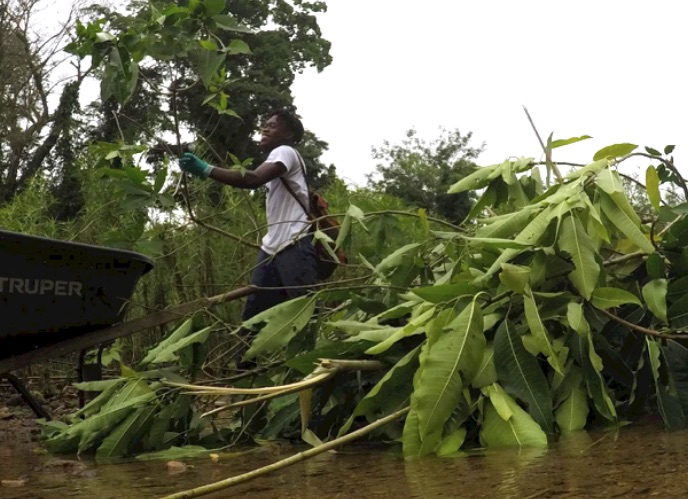
Jaren collects leaves to feed the hatchlings.
The hatchlings prefer much softer leaves such as the ones from young Cecropia trees. Two of the groups were offered feces (Yes, feces!) from the adults in order to inoculate them with the appropriate gut microflora. But before you get all grossed out – the presence of gut microflora is said to play an important role in the turtle’s ability to break down plant matter and absorb vital nutrients from their diet.
I found this hands-on approach of learning very insightful because I got a chance to study close up the biological aspects of these Central American river turtles. I believe that just like humans, each hicatee has its own unique personality and special traits. They surely have a way of slowly working their way into your hearts!
While at BFREE I not only had the chance to work with the hicatees but I had the opportunity to pick Tom Pop’s mind about different wildlife around the area. BFREE is a nature lover’s playground. The diversity of flora and fauna is jaw-dropping; I soaked in every second of it all. I was very inquisitive and every day I wanted to know more because all of it was intriguing to me.
Ranger for a Day
I also had a rare opportunity to be a ranger for the day with a fellow ranger, Mr. Sipriano Canti. This part of the internship could simply be described as “Rangers on the go!”
Mr. Canti took Manuel Balona (another BFREE Intern ) and me to Observation Post 1 where we were educated about the purpose of the facility. In short, it serves as a marker of the property boundary line for farmers and hunters using nearby land; this helps reduce illegal encroachment into the BFREE reserve. Along the boundary line road on the way to OP1, we noticed intensive farming of various crops such as corn, cilantro, and red kidney beans. To our surprise we also saw a huge portion of land set aside specifically for grazing and rearing of cattle, in close proximity to the reserve. A Forest Department established buffer zone separating the boundary line from the reserve helps prevent these types of agriculture from entering the reserve.
While at OP1 we took full advantage of what Mr. Canti would refer to as “the ranger lifestyle.” There we did different patrols all hours of the day and night. It was an experience that I will forever cherish.
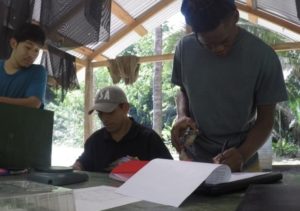
Manuel Balona (left) and Jaren Serano (right), assist HCRC Manager, Tom Pop (center) at the HCRC.
All in all, the experience will definitely be one for the books. Never in a million years did I believe I would be given such an opportunity to be a part of something this moving. It was great to be around people who share mutual feelings when it comes to conservation making two weeks go by too quickly. The rainforest is truly our classroom.
I will continue sharing the knowledge learned at BFREE among peers and anyone who is willing to lend an ear. I believe this internship brought me steps closer to my ultimate goal of someday becoming a zoologist and helping with various conservation efforts in my country.


 Earlier last year, BFREE Program Coordinator, Tyler Sanville, stitched together the “SAVE THE HICATEE” banner while on a visit to the Field Station. She cut letters out of old bed sheets and sewed them on one by one. The banner was first signed by Natural Resource Management students from Independence Junior College.
Earlier last year, BFREE Program Coordinator, Tyler Sanville, stitched together the “SAVE THE HICATEE” banner while on a visit to the Field Station. She cut letters out of old bed sheets and sewed them on one by one. The banner was first signed by Natural Resource Management students from Independence Junior College. 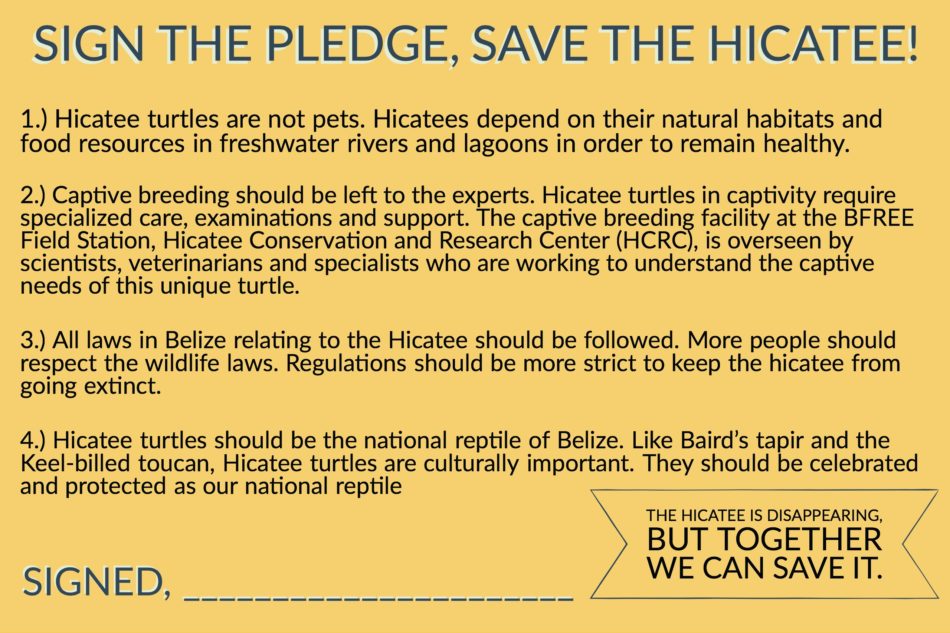
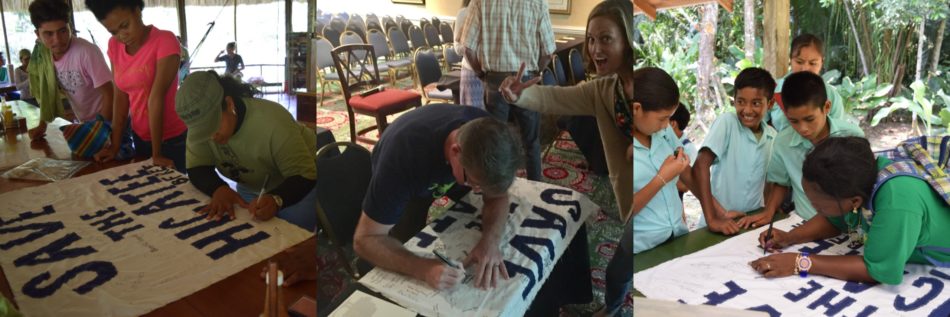
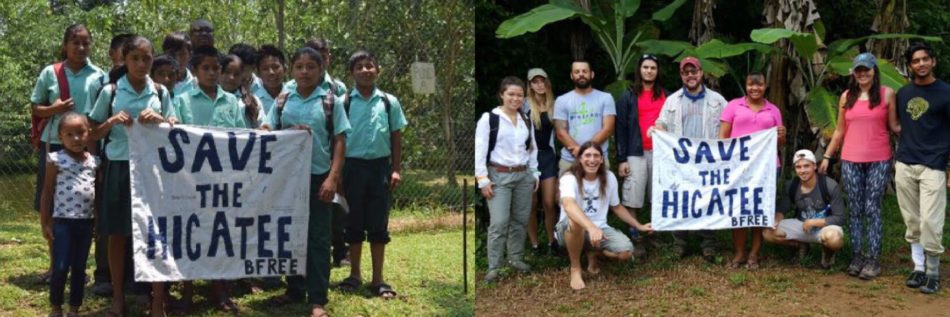
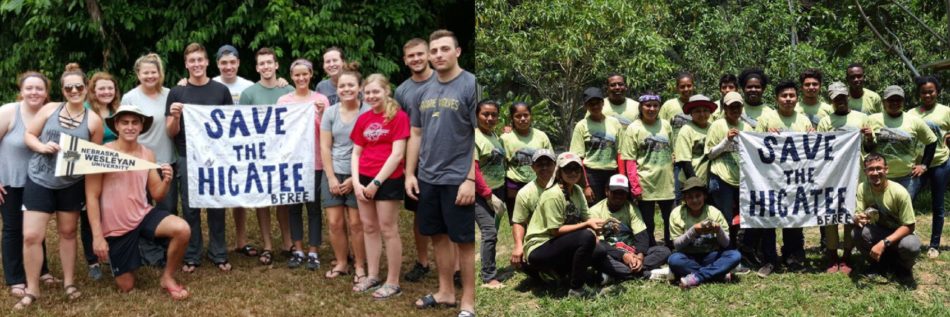
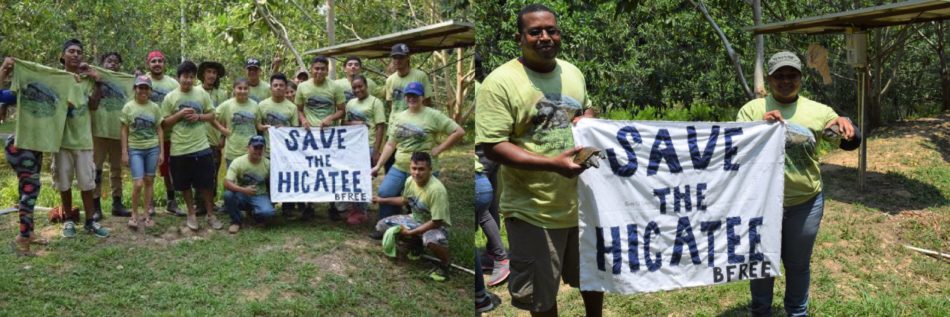
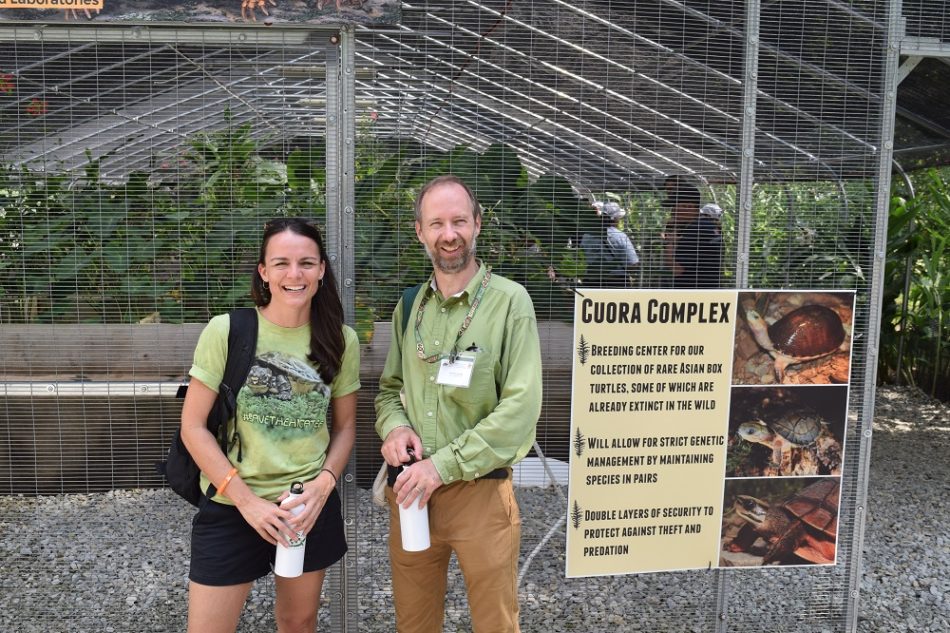
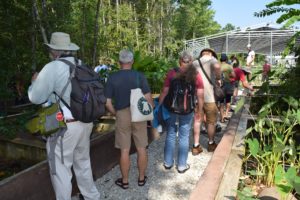
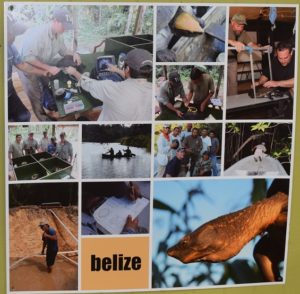

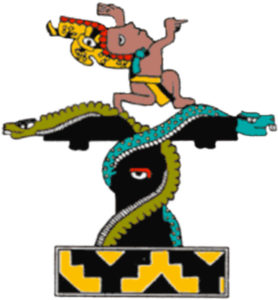

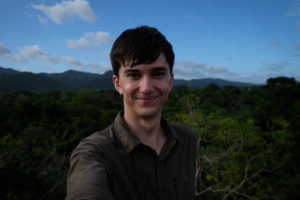 Parr McQueen, an undergraduate student at the University of Richmond traveled to Belize with BFREE earlier this year along with thirteen other classmates. The Field Course led by Dr. Amy Treonis and Dr. Kristine Grayson was focused on using experiential field methods to learn how scientists study the natural world.
Parr McQueen, an undergraduate student at the University of Richmond traveled to Belize with BFREE earlier this year along with thirteen other classmates. The Field Course led by Dr. Amy Treonis and Dr. Kristine Grayson was focused on using experiential field methods to learn how scientists study the natural world.